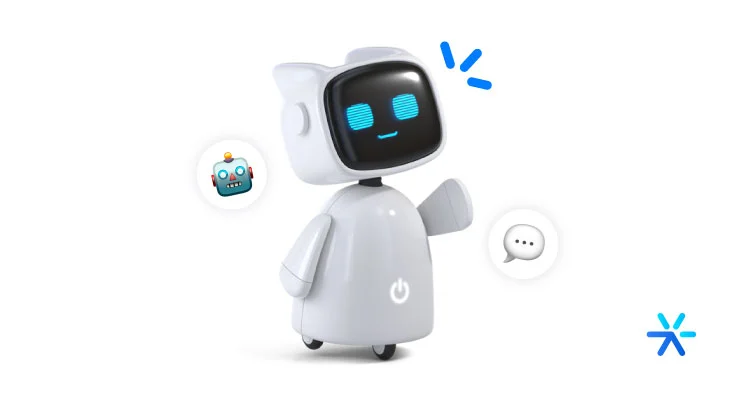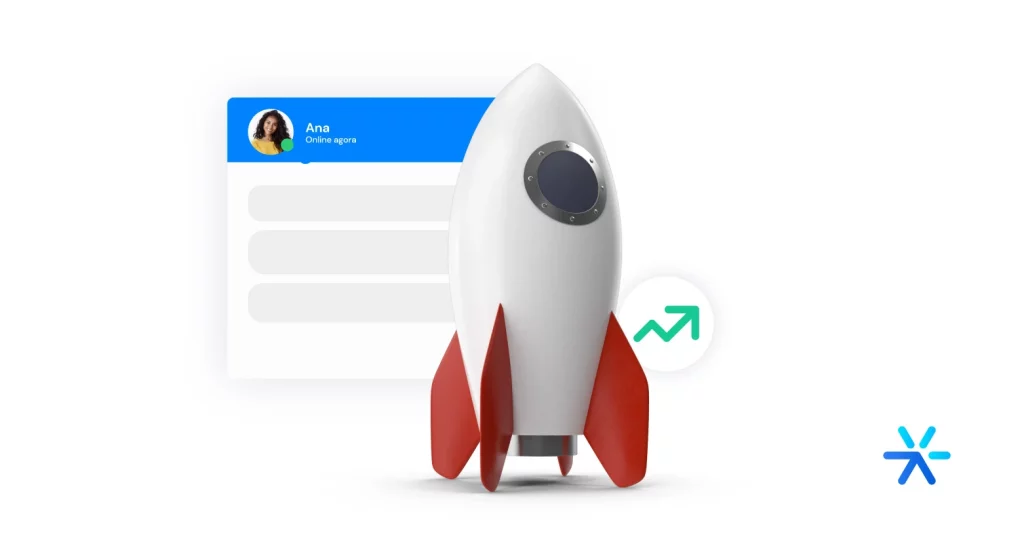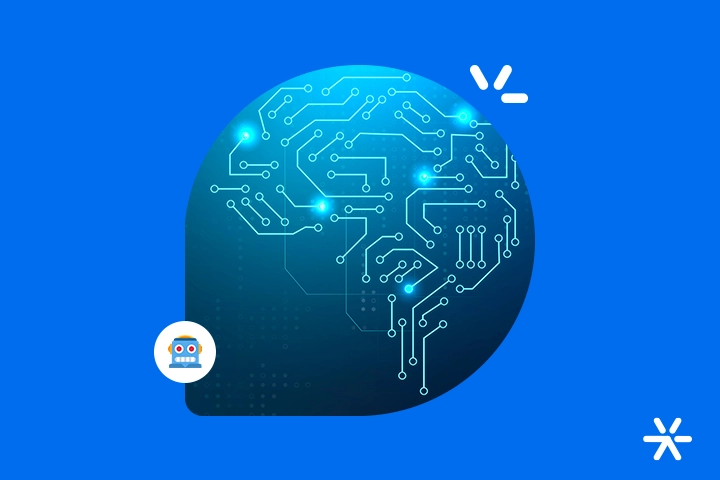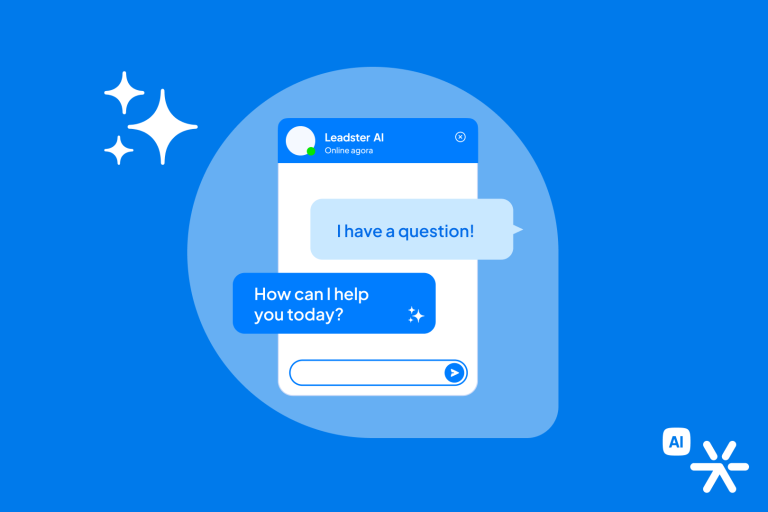The Top 5 AI Analytics Apps in 2024
We’ve talked quite a bit about Artificial Intelligence here on the blog, but this is the first time we’re specifically addressing AI Analytics.
And it’s not without reason. Talking about AI here on the blog is one of our greatest passions, but at the same time, the more surface-level conversation — best apps, how to use it in marketing, etc. — is much easier than talking about AI Analytics.
For this topic, we need care and thorough research because it involves changes that could be quite drastic for your company.
With that in mind, we’ve conducted intensive research and prepared this material, which ranges from the basics, explaining what AI Analytics is, to recommendations on which tools to use.
Shall we?
What is AI Analytics?

First, the basics: what exactly is AI Analytics?
Just by the name, we can get a good idea of what it is. Through AI Analytics, companies can have a much deeper insight into their metrics.
There have always been various Analytics platforms for a wide range of needs.
For analyzing data on website traffic and campaign performance, Google Analytics is the best of all.
For broader analyses that go beyond digital strategies, there are Business Intelligence tools — like Power BI, for example.
AI Analytics is the same thing: a data analysis platform, which can be as complex as Power BI or relatively simple like Google Analytics.
The biggest difference is that it uses AI for this analysis. In this context, AI can:
- Be trained with a database;
- Use this training to identify key metrics for the company;
- Offer specific insights based on these metrics;
- Simplify the reading and usability of the tools;
- Deliver localized data to each department automatically;
- And much more, depending on the AI’s functionalities.
The major advantage of AI Analytics is that you can have a whole team of analysts within a simple web-based program.
For large companies, this represents the possibility of doubling the team’s size without needing major hires.
For smaller companies, it represents the possibility of having a data analysis system perhaps for the first time.
AI Trends in 2024
In 2024, AI is taking big steps towards AI Analytics.
We had major debuts during the pandemic years, with Generative AIs dominating the market, media, and popular imagination.
In fact, we have several articles discussing Generative AI in the context of digital marketing production. I’ll leave the links below and then we’ll continue the conversation:
➡️ AI in business: what’s real and what’s not
➡️ AI in Digital Marketing – 30 useful examples
➡️ The Positive Aspects of Artificial Intelligence. And the other ones.
➡️ Artificial Intelligence Chatbot: The 8 Best on the Market
In 2024, the trend for AI is that it will become increasingly specific and even more targeted.
One of these directions is apps focused on B.I. and AI Analytics.
Here in this article, we’ll discuss the initial stages of AI Analytics apps, as they are still being developed gradually.
Throughout 2024, we’ll see more apps emerging and more functionalities coming up as the market matures.
But that’s a conversation for the future. For now, we need to understand exactly what these apps do by looking at their benefits. Shall we dive in together?
Some benefits of doing data analysis with AI

This topic itself runs the risk of becoming obsolete within a few months of the article’s publication.
That’s because understanding the benefits of data analysis with AI will become much more evident as the platforms develop and become more popular.
It’s like asking “what are the benefits of advertising on social media?” in 2024. These ads are already so widespread that even those who don’t advertise know they should be.
However, since we are taking these first steps, many people don’t quite know exactly how AI Analytics works and what its main advantages are.
That’s what we’re going to talk about now. This is our first stop in delving into what AI Analytics can offer.
Stay tuned:
Endless hypothesis testing
One of the most positive points of AI Analytics is how it can think of practically all hypotheses to generate a theory.
B.I. systems operate by gathering data and presenting it in a simple Dashboard, making it easy for analysts to read. Based on what they see, they formulate hypotheses.
For example: sales are dropping this quarter. Analysts use B.I. systems to analyze their key metrics and search for explanations for this drop.
With AI Analytics, this process becomes faster and practically infinite. It’s possible to create and test hypotheses based on your data in all imaginable ways.
And all of this in a matter of seconds. Hypothesis testing is typically done within a few days or weeks. They are validated in meetings, go to the board, etc.
With AI Analytics, everyone has access to data and interpretations, which are made instantly and based on any data point you determine.
And speaking of that:
Ask the data
One of the key points of AI Analytics is the ability to ask the data directly.
Human analysts interpret data, formulate hypotheses, test them — important: these tests are practical and can take a long time — and then implement solutions.
This way, they function as data guardians because often these analysts are the only ones in the entire company who know how to use these systems.
AI allows anyone to perform this analysis since it functions as this data intermediary.
This is especially true with Generative AI. Systems integrated with ChatGPT can receive questions, from the simplest to the most difficult, and respond based on your database.
In many cases, you don’t even need to ask: the systems can send periodic emails to each department, bringing the most relevant information about them directly to the leaders’ inboxes.
Less bias
The biggest problem with dealing with data analysts is their natural biases and those created during data analysis.
Every human being has biases. Sometimes these biases can be from that very day. Maybe the analyst woke up in a bad mood, and all their analyses are impacted by that.
Or sometimes they are deeper biases that they don’t even realize exist.
Thus, conclusions that seem completely rational are actually influenced by biases.
AI has no bias beyond the data you provide to the database.
So, you get a more assertive and truthful analysis without worrying about any interference.
A great example of this: due to an intense period of rain, your sales are dropping.
However, this is the analyst’s interpretation. Using an AI system, they realized that few areas affected by the rain even had access to the product in the first place.
More accurate testing and forecasts
One of the most interesting points of B.I. systems is the ability to “play” with the data.
You can perform analyses using a testing sandbox, using different metrics to see what the worst and best-case scenarios would be.
But this takes time. With an AI Analytics system, you can simply ask for something like “create perfect and disastrous scenarios using the same metrics” and get the result in seconds.
This relieves the workload of analysts while increasing the possibility of performing these tests exponentially.

Applications and use cases of AI Analytics in business

At the same time, we need to understand that the field of AI Analytics goes far beyond its applications in Business Intelligence. Much further indeed.
The entire B.I. umbrella can and is being impacted by AI.
There are specific analyses, like ads, SEO, and more, that bring smaller impacts than the whole ecosystem of a B.I. tool can offer but are quite important for the methodology as a whole.
Here we’ll also list some specific tools for this task, so stay tuned:
By Application Type
First, we need to understand the areas of application that AI Analytics can offer.
For that, we need to separate its functionalities from the types of applications that are already being transformed by AI.
But it’s important to understand that some of these applications are still just theoretical. Later in the text, we’ll specifically discuss which ones are already available for use today.
The main applications for AI Analytics in 2024 are:
- Ad analysis: there are already platforms today that work with interpreting the ads you launch, analyzing the evolution of keyword prices, ad performance, etc. Google is already taking the first steps in this direction by offering integrations with Google Analytics via Google Cloud.
- SEO: keyword research platforms are testing and releasing AI betas that can understand the intent behind searches, delivering the best keywords for each occasion. HubSpot has been dominating the market in this sense, but its AI is still quite limited, functioning as an assistant.
- E-commerce analytics: e-commerce businesses will also benefit greatly from AI. In fact, they are already benefiting, but in a different way. Currently, the main uses of AI in e-commerce are mainly restricted to upselling and cross-selling, primarily through chatbots and email automation.
- Customer experience: by far, the most advanced part of applied AI today — outside of the basics of Generative AI — is in customer service through chatbots. Zendesk and Salesforce are dominating the market in this aspect. These tools provide AI assistants for customer service and also offer AI Analytics to better understand the overall situation of the sector.
- Internal analytics: process management systems are also receiving their first betas with AI functionalities. And specific tools are already emerging for this, such as UiPath. Other comprehensive B.I. tools, like IBM Watson, also have applications in project management.
By Business Segment
To complete the thought entirely, it’s always good to also talk about some examples of business segments to understand what AI can really do in each of them.
Maybe yours is here, maybe not: but either way, these use cases will help you understand to what extent you can take AI Analytics, and in a more practical and less abstract way.
But the disclaimer still applies. Today, it’s still difficult to find many platforms that actually use AI Analytics.
In most cases, AI comes as a support in B.I. efforts, which are still mostly carried out by humans.
But let’s discuss this more in the dedicated topic that comes after this item. For now, here’s a quick list of segments that can be and are being impacted by AI Analytics:
- B2C Retail: AI Analytics systems can store data from previous campaigns, whether they are digital marketing campaigns with Paid Media or offline, with printed materials, promotions, etc.
- Service sector: they can analyze the time spent on each project, make profit projections, have a more comprehensive view of operational costs, etc.
- Financial sector: this is where the promise of AI is strongest. In this sector, it can predict market movements that impact clients’ investment portfolios, detect fraud more easily, calculate appropriate interest rates, etc.
- Digital service sector: these are services sold online, such as SaaS products and companies focused on PLG. Here, AI Analytics mainly operates on data related to lead generation and understanding the effectiveness of ad campaigns.
If you want more in-depth data for your sector, we analyzed conversion rates and other very relevant information in our latest Lead Generation Landscape.
It’s really worth checking out. Access for free by clicking on the banner right below:
5 AI Analytics tools to know

This is the part of the text you were looking for, I imagine.
I don’t want to start with a bucket of cold water, but at least an American cup I unfortunately need to pour on you.
The truth is that AI Analytics systems are still not very widespread in the market.
The first major revolution of AI in the digital marketing scene is in the creative area, with Generative AI.
However, some tools are already being created, and other functionalities are being introduced in the major Analytics platforms — like Google — to welcome them.
I made a quick list here with the X main AI Analytics tools and the ones that come closest to them.
Most of them are indeed in Business Intelligence systems, which are already established in the market and are now receiving the addition of AI.
That’s why they are more common and generally more robust. They don’t need to be created from scratch.
More about that now. Follow me:
Google Cloud
Google Cloud is not an AI Analytics tool, and Google itself doesn’t have any tool in that sense.
What it offers is a bit different: it’s integrations with the main sales CRMs in the market and other analysis platforms, which can include AI.
I wanted to mention Google Cloud here because without it, you won’t have access to the most important part of AI Analytics for issues related to your website.
Access this link to understand how the integrations work, and when choosing your tool, always ask if there is integration with Google.
➡️ By Google: Marketing analysis and AI solutions.
AnswerRocket
Throughout the text, we talked a lot about the side of asking questions to your Business Intelligence system. And AnswerRocket does exactly that.
Its AI is a business assistant, capable of learning from a database and continuing to learn through Machine Learning.
With goals set in the system, you can configure dashboards to display them. That’s the most basic functionality of the system.
The most interesting one is the ability to converse with it. Ask about monthly sales, ask about ROI, ask about anything: the answer will always be based on the database you provided.
Among all AI Analytics systems, this is the most interactive. However, it’s not very deep, with simpler functionalities.
The other side of the coin comes right below:
IBM Cognos and Watson
IBM’s Cognos allows you to create dashboards like any other B.I. system. But it’s Watson that does the hard work of AI Analytics.
Through Watson, you can configure a comprehensive database, but its main work is behind the scenes.
It gathers important data for your business and, through Machine Learning, becomes more efficient at this work over time.
Cognos is the interface you operate. You can create your dashboards and chat with it using Generative AI, which is always available.
It’s like AnswerRocket, but with many more functionalities and a steep learning curve, requiring people who are experts in the system.
Coefficient
Coefficient is an extension for Google Sheets that doesn’t require code or API for installation.
Its operation is simple: you install the extension and can activate it directly in the drop-down of Google Sheets.
After installation, you can use several ChatGPT functions within your spreadsheet, including:
- GPTX – Returns responses for the entire spreadsheet;
- GPTX_LIST – Returns responses for a single cell;
- GPTX_TABLE – Returns responses for a table;
- GPTX_FORMAT – Converts inputs to a specific format;
- GPTX_TAG – Applies one or more tags to the selection;
- GPTX_CLASSIFY – Classifies text according to predefined categories;
- GPTX_EXTRACT – Extracts specific information from the selected text;
- GPTX_SUMMARIZE – Creates a summary based on the selected input;
- GPTX_TRANSLATE – Translates the input into any language;
- GPTX_CONVERT – Converts the text into any selected format;
- GPTX_CODE – Generates code for a specific context.
These are just a few examples that you can follow directly on the Coefficient website.
Bardeen.ai
We also talked about AI Analytics focused on productivity analysis at work, remember?
Bardeen.ai is a great solution for this context. It’s a hybrid software: while it creates automations, it also integrates with various other platforms.
You can ask the AI, in these exact words, “get the lead list from spreadsheet X, compare it with Clearbit data, and then send a recruitment email to those who pass the criteria.”
That’s the example they use on their website to demonstrate the type of automation the platform can perform.
Among the tools we’ve reviewed, Bardeen is in the running for the most interactive champion.
Limitations of using AI for data analysis

But not everything is perfect. We need to understand that AI is a great ally in data analysis, but it’s still not perfect.
Articles online hype up the potential of AIs a lot, but the reality at the moment is that there aren’t yet so many tools in the market.
We’ve just seen five of them, and there are a few more, but the uses of AI are still in their early stages.
Bardeen, among all, is a great example to understand what AI is really capable of doing: automating repetitive or very extensive tasks.
And especially with a Generative AI interface.
This is the scenario of AI Analytics today. These routine automations or the analysis of a large amount of data, and providing interpretations about them.
But still on this subject, one last point we need to address before finishing the article:
Can AI replace data analysis professionals?
At this point, we need to understand that AI should not — or cannot really — replace someone.
These systems are complex and quite powerful, and can even be considered creative.
But that creativity is not the same as ours. Our database is much more holistic, and therefore broader, than AI.
Of course, we make more mistakes than machines. But that’s just a small price we pay. The benefit is the human mind, so complex and so deep.
To be more practical, think of it this way. A data analyst doesn’t just have that database provided by the AI operator. They have all their professional experience and academic background analyzing alongside them.
AI should not replace human analysts because it’s not an analyst. It’s a means of navigating through data you already have in your company.
It’s conversing with the data. And they still need to be interpreted.
But that’s a more distant reality for the AI Analytics scenario, anyway.
Nice, you reached the end of the article.
Hope you found what you were looking for here. AI Analytics is still a development field, so many new things are just around the corner.
Thanks for reading and, if you have anything new to share, feel free to do it in the comment section.
Check out Leadster’s free trial today!









